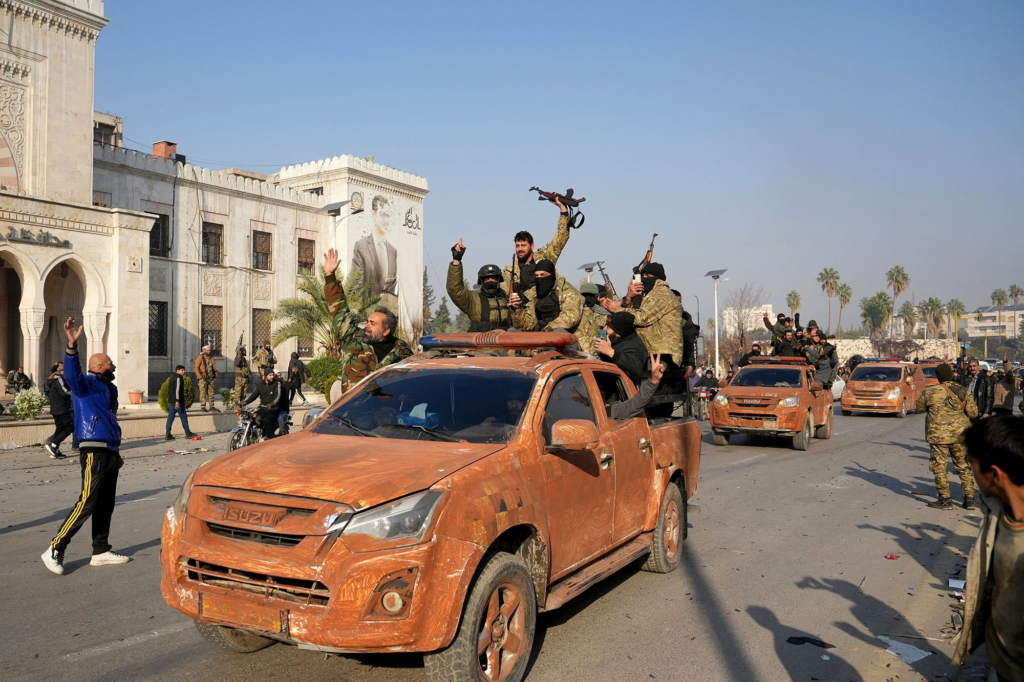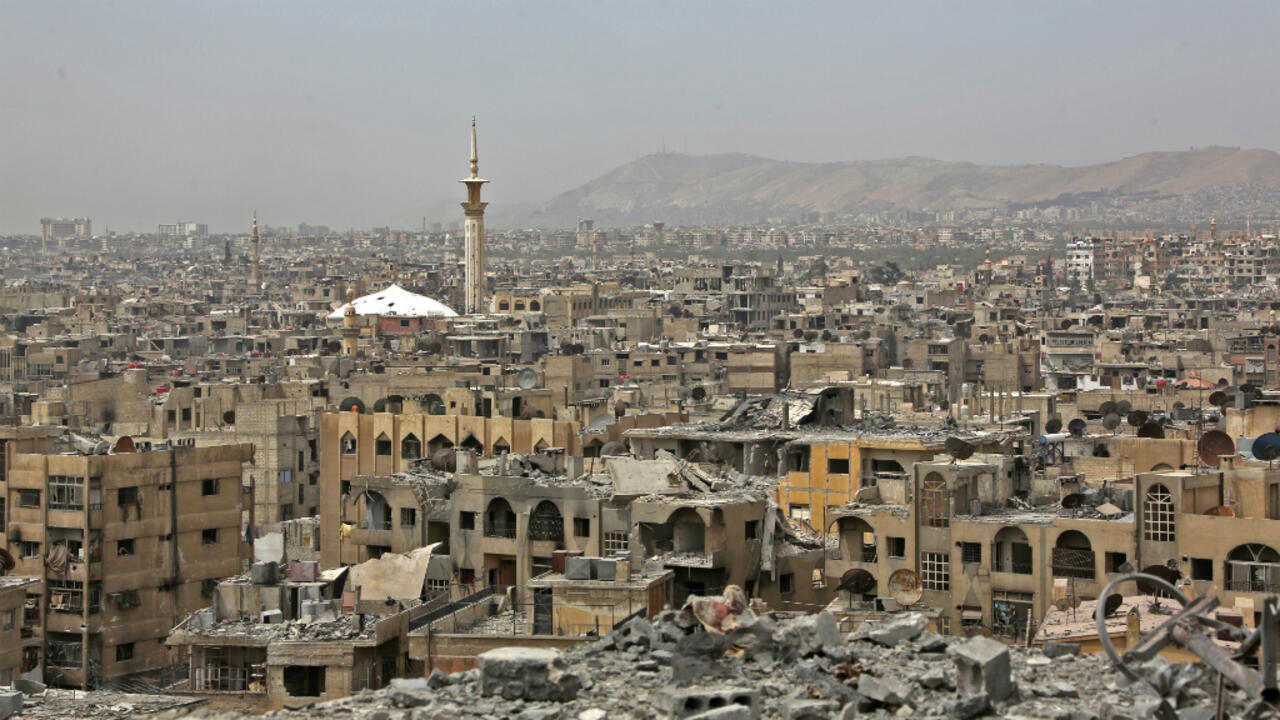These victories have brought the rebels closer to the Syrian capital, Damascus, raising questions about whether the seat of Bashar al-Assad’s regime could be next on their list. The developments have sparked intense speculation about the potential fall of Damascus and the broader implications for the region.
The Syrian Civil War, which erupted in 2011, has left the country ravaged by conflict and divided between multiple factions vying for control. Over the years, the opposition forces have steadily gained ground, capturing strategic cities such as Aleppo, Homs, and Daraa.
The Fall of Strategic Cities: A Prelude to Damascus?
The capture of Daraa by Syrian opposition forces marks a significant milestone in their campaign against the Assad regime. As the birthplace of the Syrian uprising in 2011, Daraa holds symbolic and strategic importance.
Rebel forces, particularly the Southern Operations Room coalition, announced their complete takeover of the city, stating that they had begun consolidating their control over its institutions and infrastructure. This victory followed the capture of Aleppo and Homs, two cities that were key battlegrounds in the civil war.
Homs, often referred to as the “gateway to Damascus,” is strategically located and serves as a critical link between Damascus and Syria’s coastal provinces of Latakia and Tartus, areas loyal to the Assad regime.
The city had partially fallen to opposition forces earlier in the conflict but was retaken by Assad’s forces after a prolonged siege in 2014. Its recapture by rebels this year underscores the fragile nature of Assad’s territorial control and raises concerns about the regime’s ability to defend its strongholds.
Read : Syrian Government Loses Fourth City of Daraa to Rebels
The northern faction of the rebellion, led by the Islamist group Hayat Tahrir al-Sham (HTS), has also made significant advances, capturing key cities and pressing closer to central Syria.
BREAKING: It appears Syrian rebels are closing in on Damascus in Syria. Pro-government forces are denying President Assad has left the capital. pic.twitter.com/qMUHbyOUv6
— Tucker Carlson Network 🇺🇸 Fan Account (@TCNetworkFans) December 7, 2024
Despite being distinct from the southern factions, these groups share a common goal of toppling Assad’s regime, creating a unified threat from multiple directions. With rebels advancing from both the north and the south, the pressure on capital is mounting.
Assad’s Vulnerability: A Hollow Defence?
The regime’s military has shown signs of weakness in the face of the opposition’s coordinated offensives. Reports indicate that Assad’s forces are overstretched, relying heavily on poorly trained conscripts who lack the morale and capability to hold their ground. This has allowed the rebels to make swift advances, as evidenced by their recent victories.
The fall of Homs, just 100 miles from capital city, has further exposed the vulnerability of Assad’s defences. The city’s strategic position as a conduit to the capital and the coastal regions makes it a critical loss for the regime. The capture of Homs has also enabled the rebels to cut off key supply routes, isolating Damascus from reinforcements and resources.
In response to these developments, Assad has reportedly been withdrawing troops from eastern Syria to bolster defences around the capital.
However, this redeployment has come at the cost of ceding control of other key cities, such as Deir ez-Zor, to Kurdish factions. This desperate strategy underscores the regime’s precarious position and its prioritization of defending Damascus at all costs.
Despite the rebels’ momentum, deep divisions within their ranks could hinder their ability to launch a unified assault on Damascus.

The various factions, though aligned in their opposition to Assad, differ in ideology and objectives, creating potential for discord. Additionally, the regime retains the support of powerful allies, including Russia and Iran, whose intervention could tilt the balance in Assad’s favor.
Regional Implications: A Conflict Beyond Borders
The battle for Syria has far-reaching implications for the wider region. The potential fall of Damascus would represent a significant shift in the balance of power in West Asia, with ripple effects on neighboring countries and international actors.
Iran, Iraq, and Syria have expressed grave concerns over the advances of opposition forces, warning that the insurgency poses a serious threat to regional stability.
In a joint statement, the three countries described the rebels as “terrorists” and called for collective action to confront the growing menace. Their fears are rooted in the possibility of extremist groups gaining a foothold in the region, further destabilizing an already volatile landscape.
Israel, too, is closely monitoring the situation, wary of the potential for the conflict to spill over into its borders. The Israeli military has heightened its state of readiness, prepared to respond to any scenario that might compromise its security interests.
The fall of Damascus could create a power vacuum, inviting external actors to vie for influence in Syria and intensifying geopolitical rivalries in West Asia.

For Russia and Iran, Assad’s survival is crucial to their strategic interests in the region. Both countries have invested heavily in propping up the regime, with military and financial support that has been instrumental in preventing its collapse.
A rebel takeover of Damascus would deal a severe blow to their ambitions, potentially forcing them to recalibrate their approach to the conflict.
The capture of Aleppo, Homs, and Daraa by Syrian opposition forces has brought them closer than ever to the gates of Damascus. While their momentum raises the prospect of a decisive assault on the capital, significant challenges remain, including internal divisions among rebel factions and the potential for foreign intervention in support of Assad.
As the battle for Syria continues to evolve, the fate of Damascus hangs in the balance. Its fall would mark a turning point in the conflict, reshaping the political and strategic landscape of West Asia. For now, the world watches as the rebels and the regime vie for control, with the future of Syria—and the region—at stake.

